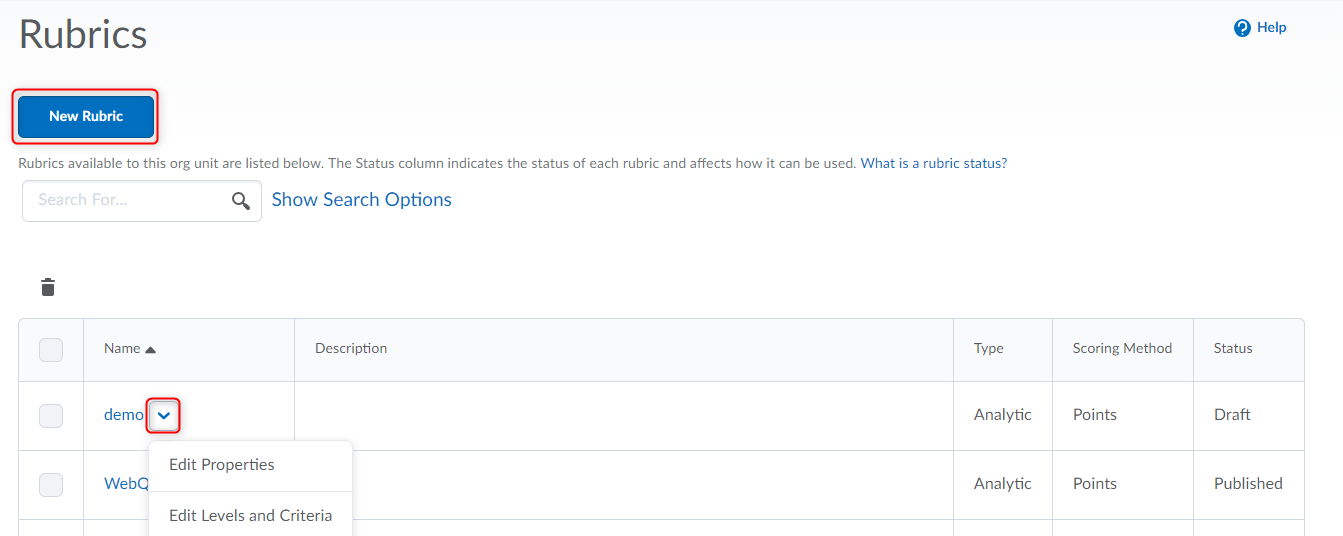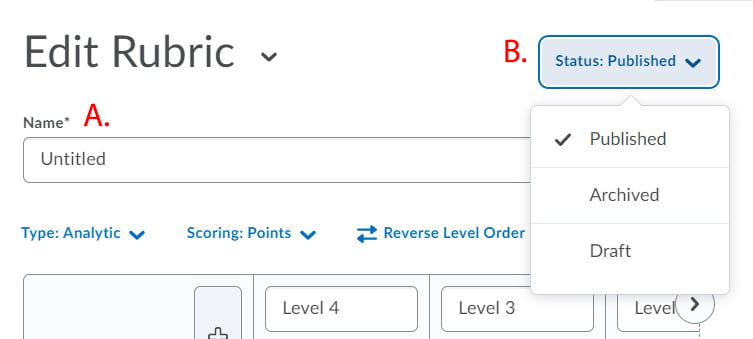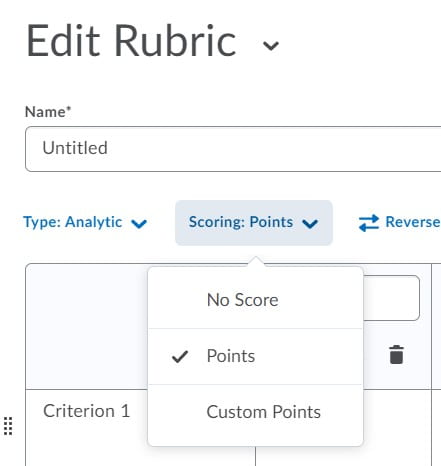


First, you will have to choose your settings for your rubric:


Analytic Rubrics –Most rubrics are analytic. An analytic rubric breaks performance into multiple criteria. You assess each criterion separately, resulting in an overall assessment score.
For example, an analytic rubric for assessing essays could have a separate criterion for spelling, grammar, and expression. Each criterion can be assessed as poor, good, or excellent, resulting in an overall assessment that adequately evaluates performance.
Holistic Rubrics – Holistic rubrics do not break performance into separate criteria. Performance is assessed holistically, so that you consider several different criteria, but make only one overall assessment.
7. Set the number of levels (example: below average, average, and above average would be 3 levels) by hitting the “+” icon to add (A) or the trash can icon to remove, and the number of criteria (B) you will be using. Rename the Levels and Criteria to meaningful names.
8. The scoring method can be points, custom points, or no score. The difference between points and custom points is that points will assign one value for all criteria under a specific level, where custom points allows for custom points for each criteria under each level.

9. There is an “Options” dropdown at the bottom of the page. You will find options such visibility options for students. There is an option to allow the Rubric to be available to competencies which should always be turned on. Removing this option will reduce some of the rubric’s functionality.
RRC Polytech campuses are located on the lands of Anishinaabe, Ininiwak, Anishininew, Dakota, and Dené, and the National Homeland of the Red River Métis.
We recognize and honour Treaty 3 Territory Shoal Lake 40 First Nation, the source of Winnipeg’s clean drinking water. In addition, we acknowledge Treaty Territories which provide us with access to electricity we use in both our personal and professional lives.